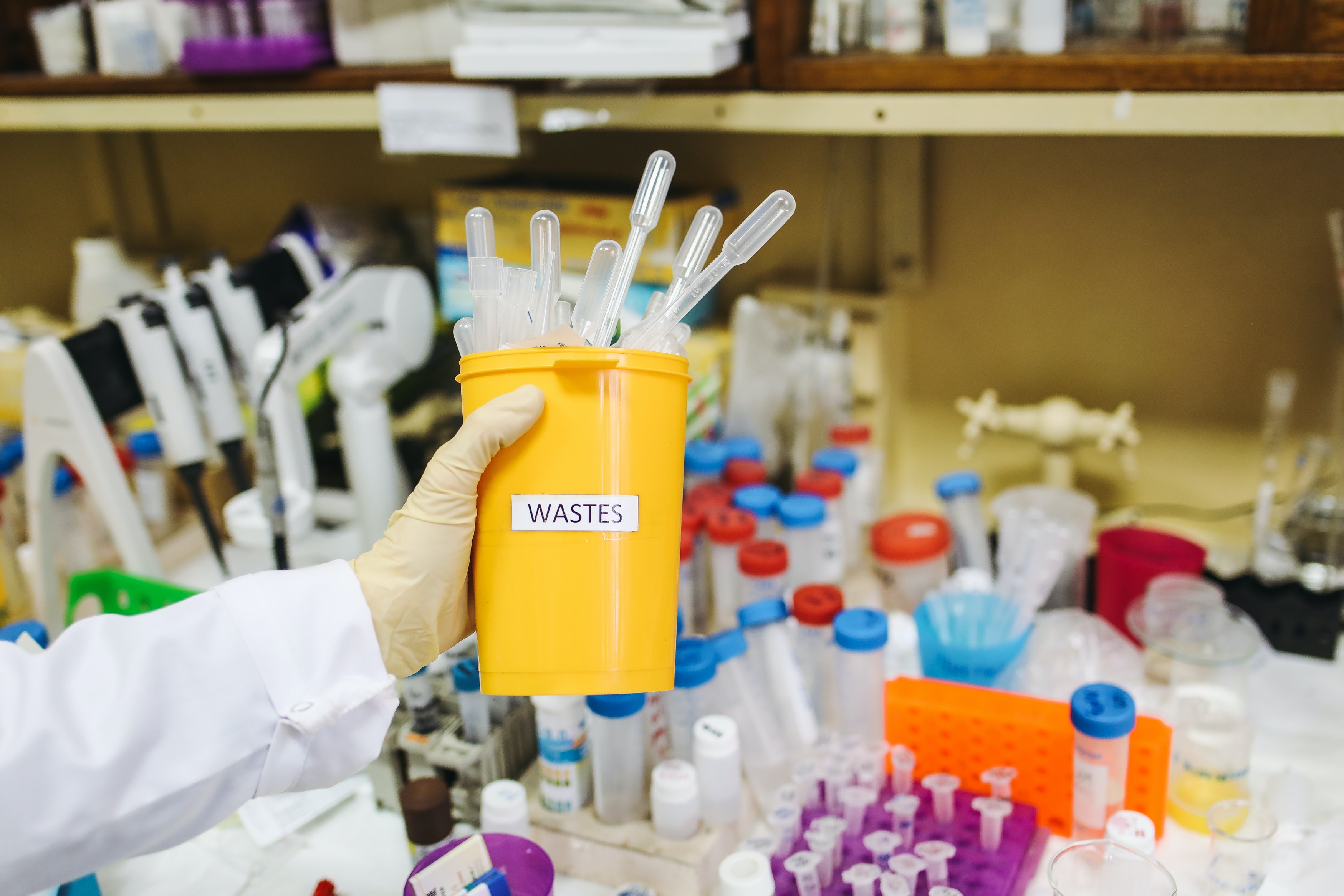Expert interview
Every tenth of a degree matters when it comes to mitigating the consequences of global warming: sustainability measures in the laboratory
The life sciences sector consumes huge quantities of energy and resources. This needs to change and we have to think differently. But how and where can sustainability measures be sensibly applied in the laboratory without compromising the quality of research results? Dr. Kerstin Hermuth-Kleinschmidt, owner of NIUB-Nachhaltigkeitsberatung, a company from Freiburg that focuses on sustainability in the life sciences, tells BIOPRO how this can be done.
Dr. Hermuth-Kleinschmidt, what led you to establish a company focused on achieving greater sustainability in the laboratory? And what in your background has made this venture possible?
I studied chemistry in Freiburg and continued with a doctorate in microbiology. I then worked in industry, initially in sales, then in technical support. I have been increasingly focusing on sustainability since my two children were born. I decided to take courses in environmental management and environmental economics and eventually founded NIUB-Nachhaltigkeitsberatung, a consultancy which supports life sciences companies and research institutions in the implementation of sustainability processes. This company combines my professional expertise from science and industry with the desire to make a meaningful contribution to more environmental protection and sustainability in our society.
Sustainability is a collective term that brings together many different measures relating to the conscious use of resources. How do you define sustainability in the laboratory?
 As the owner of NIUB-Nachhaltigkeitsberatung, Kerstin Hermuth-Kleinschmidt advocates for more sustainability in the life sciences sector. © Dr. Kerstin Hermuth-Kleinschmidt
As the owner of NIUB-Nachhaltigkeitsberatung, Kerstin Hermuth-Kleinschmidt advocates for more sustainability in the life sciences sector. © Dr. Kerstin Hermuth-KleinschmidtSustainability always encompasses the three dimensions of ecology, economy and social issues. Sustainability efforts must set out to achieve harmony between these three dimensions. As regards laboratory work, there are two other key aspects to take into consideration, i.e. working safely and ensuring the quality of research results. The implementation of sustainability measures only makes sense if the results are reproducible and quality criteria such as sensitivity, selectivity and accuracy are met.
This can be nicely explained using liquid chromatography (LC) as an example: switching to miniaturised techniques such as micro and nano LC columns massively reduces the quantity of hazardous solvents used, thus minimising purchasing and disposal costs. Working with much smaller quantities of potentially toxic chemicals also makes it safer for those handling such substances. This technology is now so mature that the necessary quality criteria can be achieved.
What are the most important economic and ecological levers for environmentally aware action in everyday laboratory work?
Sustainability measures can be implemented effectively in appliance management. I focus primarily on large appliances such as freezers. Here, reducing the temperature from -80 °C to -70 °C generates energy savings of between 20 and 35 percent, depending on the kind of freezer used. When purchasing new equipment, the focus should be on the life cycle costs not the purchase price. Seemingly cheap devices might consume high amounts of energy, which is detrimental to the environment and makes them uneconomical in the long run. In addition, attention should be paid to the conscious use of chemicals, solvents and other consumables in the laboratory. This not only saves on the purchase costs, but also reduces disposal costs.
What are the biggest challenges for life sciences companies and research institutions that want to implement sustainability strategies?
Science lives from reproducible results. Well established laboratory methods are usually not changed if they do not have to be. This is especially true for diagnostic laboratories where procedures and processes have to be validated. In these cases, changes are often difficult to implement and involve a great deal of effort. That said, there are nevertheless a few ways of achieving greater sustainability. Lack of time and staff is a major problem. If a laboratory is looking to implement sustainability strategies, I recommend they start by analysing their current situation to identify the areas that have the greatest negative impacts on the environment. Once this is done, the company or institution can go on to develop an action plan for more sustainability. This is quite a time-consuming process and requires a dedicated team of people working on it. Ultimately the laboratory does benefit from these time-consuming analyses as it helps them establish routines that save resources and can also make everyday life easier.
What are the advantages for companies when sustainability measures are integrated into everyday laboratory life?
Driven by the current energy crisis, many laboratories need to cut costs and have taken many energy-saving measures that also make environmental sense - a typical win-win situation. Apart from the financial side, the sustainable use of resources also increases their appeal as an employer. For more and more people, sustainability is becoming more important in a professional context, and companies that focus on this are seen as more attractive.
Can you give concrete tips or examples of how simple measures can bring about change?
 Disposable plastic materials and environmentally harmful chemicals and solvents are commonly used in laboratories. Sustainable alternatives and new recycling concepts are needed here. © pexels / Polina Tankilevitch
Disposable plastic materials and environmentally harmful chemicals and solvents are commonly used in laboratories. Sustainable alternatives and new recycling concepts are needed here. © pexels / Polina TankilevitchEvery laboratory has the potential to do things to help increase sustainability. My experience is that staff are usually highly motivated when it comes to implementing environmental protection measures. Water consumption is a nice example to illustrate what I mean. On average, three to five litres of tap water are needed to prepare one litre of laboratory water. This water is not only used in experiments, e.g. for buffer solutions, but also in large quantities by equipment such as autoclaves or dishwashers. It is therefore important to make sure that such devices are only really run when fully loaded.
The quantity of plastic waste that accumulates in laboratories is huge. My advice is to find out whether some plastic vessels can be replaced with reusable glass alternatives or whether plastic ones can be reused in non-critical laboratory work. Some companies offer special recycling programmes and take back cell culture flasks or pipette boxes and return them to the recycling stream. Digitalisation can also help increase sustainability in laboratories, for example by monitoring important parameters such as temperature, energy consumption and door opening times of cooling units, which can then be used for managing laboratory devices more sustainably.
What sustainability goals must be implemented in the healthcare industry to preserve our resources in the long term and thus also ensure economic success in the future?
The healthcare industry makes an important contribution to society’s well-being. At the same time, however, we must also ask ourselves what negative environmental impact the industry has and how we can reduce this. It is therefore important to me to initiate a rethinking of production and consumption processes. Contributing to the circular economy requires us to focus on waste reduction and efficiency gains. This can be done for example by changing packaging materials and making them more environmentally friendly. New recycling concepts need to be developed. The healthcare industry is responsible for 4.4 percent of global greenhouse gas emissions. The quantity of energy consumed needs to be further reduced and we need to switch to renewable energies over the coming years. We still have the chance to make a difference and avoid excessive damage - and science itself says that "every additional tenth of a degree" matters when it comes to mitigating the already dire consequences of global warming.